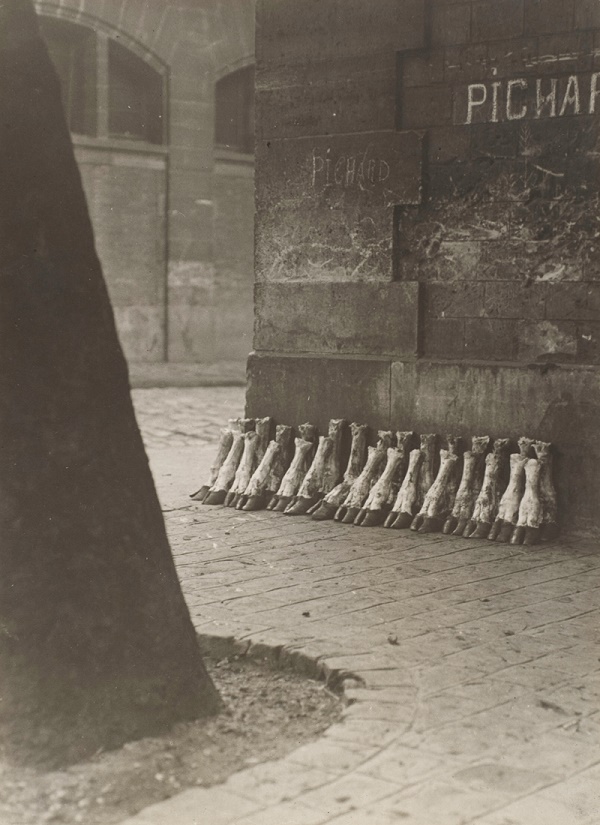
Eli Lotar, Aux Abattoirs de La Villette [At La Villette’s Slaughterhouses], 1929, coll. Metropolitan Museum, NYC

Eli Lotar, Aux Abattoirs de La Villette [At La Villette’s Slaughterhouses], 1929, coll. Metropolitan Museum, NYC
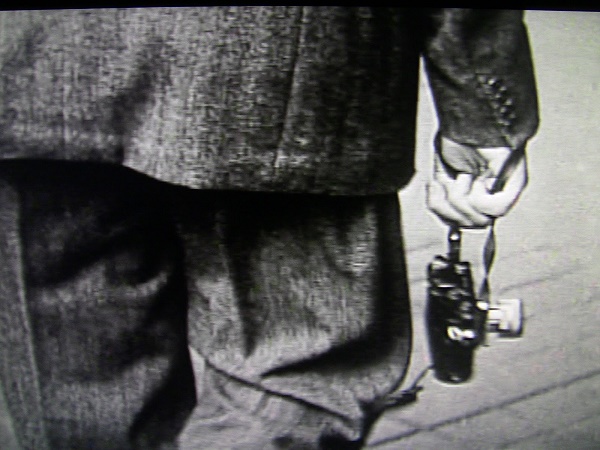
Granted, the exhibition “Images à la Sauvette” at the Fondation Cartier-Bresson (January 11 – April 23, 2017) is a great opportunity to see most of the photographs published in the eponymous –and mythical– album, be it for the first time or once again. Undoubtedly, it will be an interesting discovery for neophytes, and a refresh of pleasant memories for long-time amateurs of Henri Cartier-Bresson’s work. But it seemed there were no surprises, nothing original, until I happened on a short 1’40’’ film, shown in a nook, in which we can see the Frenchman at work (although he apparently hated being photographed of filmed), caught in action by the American photographer Gjon Mili. The scene takes place during the celebrations for the Chinese New Year in New York, in 1959: paper dragons, firecrackers, a crowd… nothing extraordinary, just partying. But in the midst of this crowd, we see a man dancing, jumping, bouncing around in whirls and zigzags, gently elbowing his way, taking a step back, two steps aside, three steps forward, ready for anything.
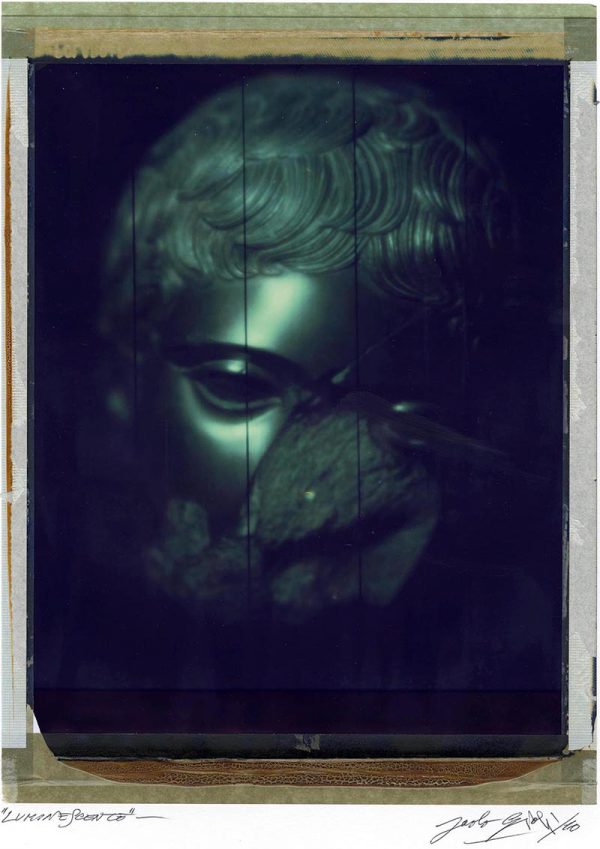
Paolo Gioli, Luminescenti, 2010, polaroid, 20x25cm
Two series of photographs by Paolo Gioli are currently on show at SAGE Paris gallery, until November 6, including these images of ancient sculptures, bathed in a green light that gives them an eerie presence.

Paolo Gioli, Luminescenti, exhibition view, François Sage Gallery
This wall of photographs will be on display at Paris Photo; to find out more about them, you can read the little book in which I wrote on those series – I will sign it at the gallery’s booth (C30) during the fair, Saturday, November 12, 3pm. Come!
The current MAMVP exhibition, curated by Jan Dibbets, is based on the artist’s idiosyncratic conception of photography; alternatively, “The Memory of the Future”, presented at the Musée de l’Élysée in Lausanne (May 25 – August 28, 2016) and curated by its new director, Tatyana Franck, grew out of a meticulous study of the museum’s artistic and technical collections. This difference in perspective can be read in the exhibitions’ titles: Dibbets’ “Pandora’s Box” is poetic and allusive, Franck’s “Memory of the Future” is more formal and, at the same time, paradoxical.
The latter is situated in the Musée de l’Élysée’s beautiful villa, which the institution will leave in a few years for a new and bold building designed by an extraordinary Portuguese agency, near Lausanne’s train station (cue the inveterate Parisian reactionary lamenters spewing their usual venom on the shores of Lake Geneva). With this move, the institution will be joining a new cultural platform (named only days before its inauguration).
“The Memory of the Future” starts off by revisiting ancient image-making techniques, creating a dialogue between vintage photographs unearthed from the reserves and artworks by contemporary artists exploring these techniques today. Contrary to Dibbets’ exhibition in Paris, the emphasis here is on the materiality of the image, its texture, its condition, its physicality… there is even a device created by a research lab enabling 3D renditions of photographs —an invention you would expect to see in relation to sculpture rather than photography. Continue reading
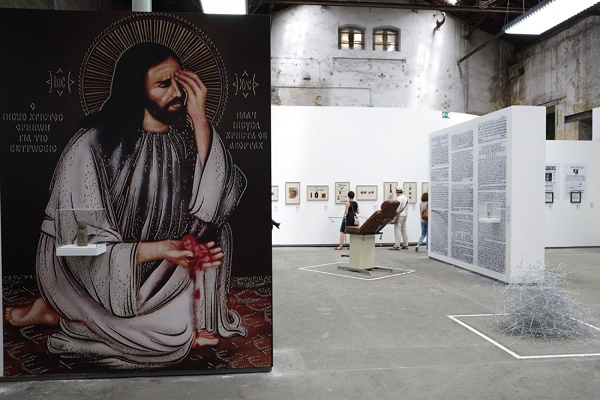
Exhibition view: Laia Abril, A History of Misogyny, Chapter One: On Abortion, reproduction of an Catholic orthodox fresco depicting Jesus Christ in lament as he holds an aborted fetus in his hand [photograph by Suzanna Pozzoli]
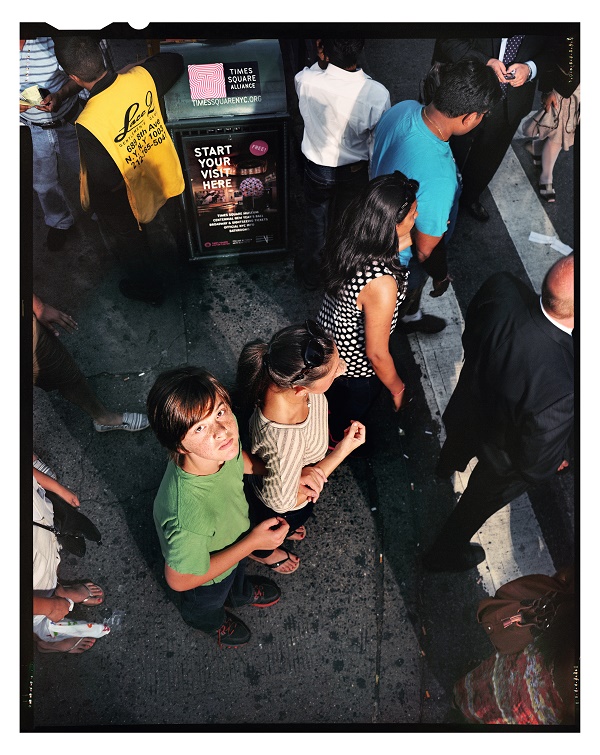
Ethan Levitas, Frame #21, Photograph in 3 acts, 2012
The first evening I spent in Arles, I met in some bar a young and friendly American photographer, Ethan Levitas. He said he was presenting an exhibition at the Grande Halle, and that he was confronting Garry Winogrand. “What a cheeky guy!”, I thought to myself. Continue reading

Eikoh Hosoe, Man and Woman, 1961
The starkest contrast on view at the Rencontres d’Arles 2016 can be found at the Méjan, one floor below the yellow-tinted exhibition of Tkachenko’s white photographs. It’s not a clash between two photographic styles, but a radical opposition between two ethos, two ways of relating to the photographed subject and therefore to the world –two philosophical standpoints, in fact. The subject at hand is Butoh, the Japanese danse –a rebel, introspective, radical and subversive art form– created by Tatsumi Hijikata and Kazuo Ohno at the end of the 1950s. Continue reading

Danila Tkachenko, The world’s largest diesel submarine, Samara region, Russia, 2013 [exhibition view]
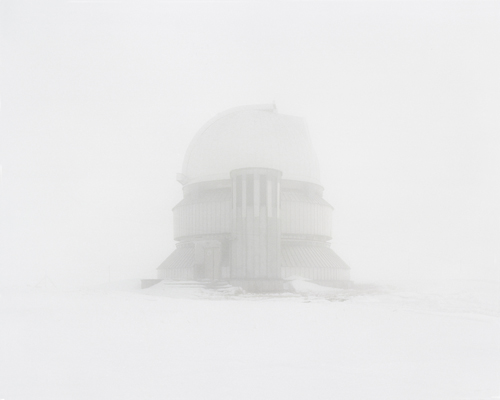
Danila Tkachenko, Deserted observatory located in the area with the best conditions for space observations
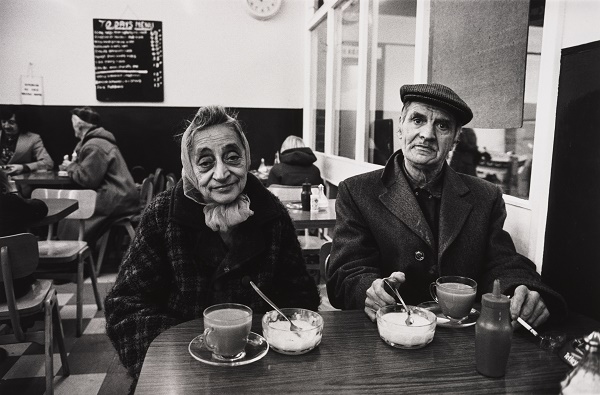
Don McCullin, A Couple having tea
Up until two years ago, the photography festival Les Rencontres d’Arles used to feature (too) heavily Martin Parr (and a few others…). I was therefore thrilled to start off the 2016 edition with Don McCullin’s exhibition in the Saint-Anne church. Why? Because, except for one glass case in the middle of the church displaying magazines, it is not about McCullin the great war photographer, but rather his “social” outlook –a facet I personally barely knew of. Contrarily to Parr’s snide and derisive signature approach to British middle class we have grown accustomed to, McCullin has nothing but tenderness and empathy for his subjects, even when he documents the daily life of homeless people in London, showing no trace of scorn or aloofness. Continue reading

Anton Giulio Bragaglia and Arturo Bragaglia, Salutando, 1911, 17.5x23cm, Galleria civica in Modeno
To question the nature of photography is the aim of Pandora’s Box, an exhibition curated by Jan Dibbets at the MAMVP in Paris (a museum the artist is familiar with), from March 25 to July 17, 2016. Hailing from conceptual art, Dibbets was among the first to examine photography itself (alongside William Anastasi, then Michael Snow, John Hilliard, Tim Rautert and Ugo Mulas). Around 1970, he created a series of photographs addressing the processes and mechanisms of photography , as well as its essence, as opposed to the images represented: the “how” of photography rather than its “what.” In this exhibition, Dibbets presses forward with these same concerns, reframing them within the history of photography, and nourishing them with readings of Vilém Flusser’s ideas –a thinker he discovered while preparing the exhibition. (This fact was of great interest to me, of course; it is more thoroughly explained in a video of his interview with Fabrice Hergott than in the catalogue).
Pandora’s Box has been put together by an artist, not an art historian, and therefore there were some liberties taken, some partial choices made, some incongruous selections (especially in the last section, which was quite disappointing), and some bizarre omissions (from the five precursors I just cited, only Anastasi and Snow are featured, and Mulas’ absence in particular is baffling, if it is not simply a petty move by Dibbets). Those choices will appeal or not to the visitor, but –at least until the last section– they make for a compelling exhibition. Continue reading